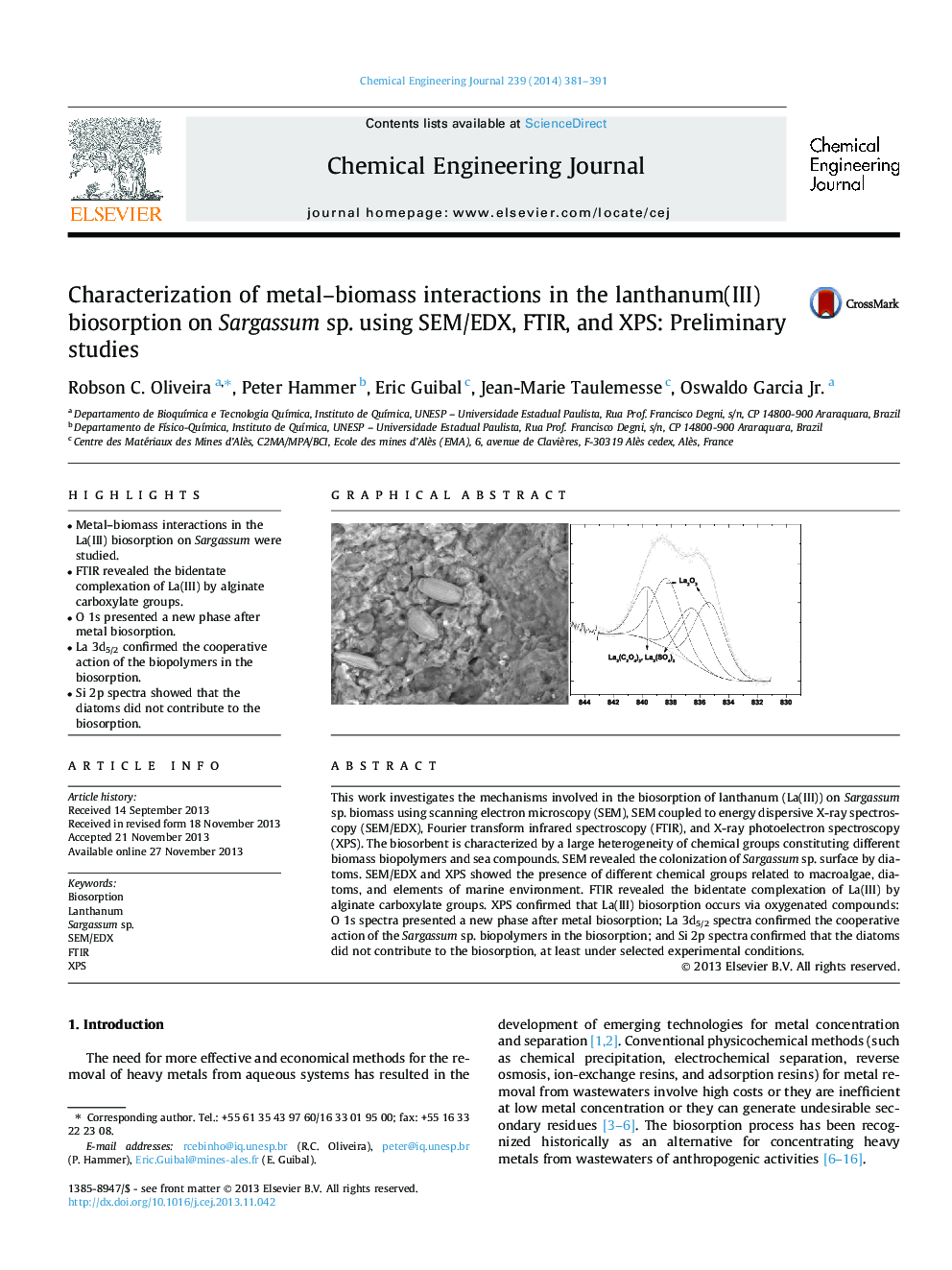| Article ID | Journal | Published Year | Pages | File Type |
|---|---|---|---|---|
| 147948 | Chemical Engineering Journal | 2014 | 11 Pages |
•Metal–biomass interactions in the La(III) biosorption on Sargassum were studied.•FTIR revealed the bidentate complexation of La(III) by alginate carboxylate groups.•O 1s presented a new phase after metal biosorption.•La 3d5/2 confirmed the cooperative action of the biopolymers in the biosorption.•Si 2p spectra showed that the diatoms did not contribute to the biosorption.
This work investigates the mechanisms involved in the biosorption of lanthanum (La(III)) on Sargassum sp. biomass using scanning electron microscopy (SEM), SEM coupled to energy dispersive X-ray spectroscopy (SEM/EDX), Fourier transform infrared spectroscopy (FTIR), and X-ray photoelectron spectroscopy (XPS). The biosorbent is characterized by a large heterogeneity of chemical groups constituting different biomass biopolymers and sea compounds. SEM revealed the colonization of Sargassum sp. surface by diatoms. SEM/EDX and XPS showed the presence of different chemical groups related to macroalgae, diatoms, and elements of marine environment. FTIR revealed the bidentate complexation of La(III) by alginate carboxylate groups. XPS confirmed that La(III) biosorption occurs via oxygenated compounds: O 1s spectra presented a new phase after metal biosorption; La 3d5/2 spectra confirmed the cooperative action of the Sargassum sp. biopolymers in the biosorption; and Si 2p spectra confirmed that the diatoms did not contribute to the biosorption, at least under selected experimental conditions.
Graphical abstractFigure optionsDownload full-size imageDownload as PowerPoint slide
